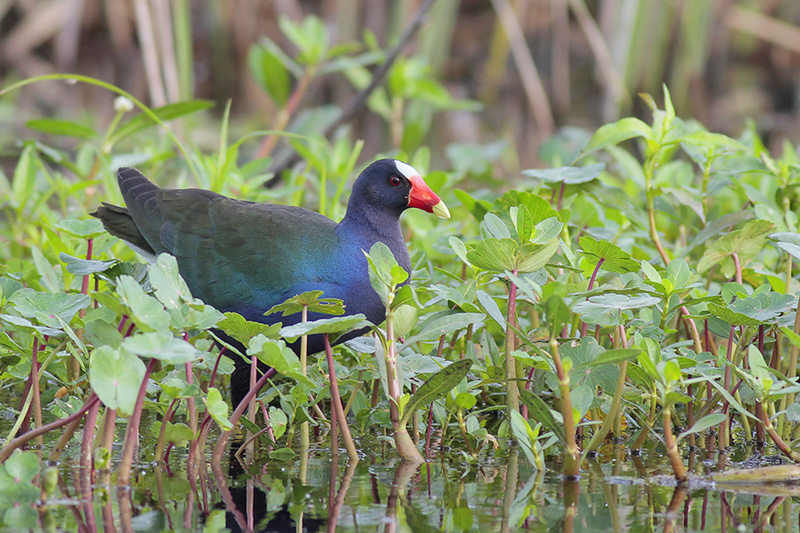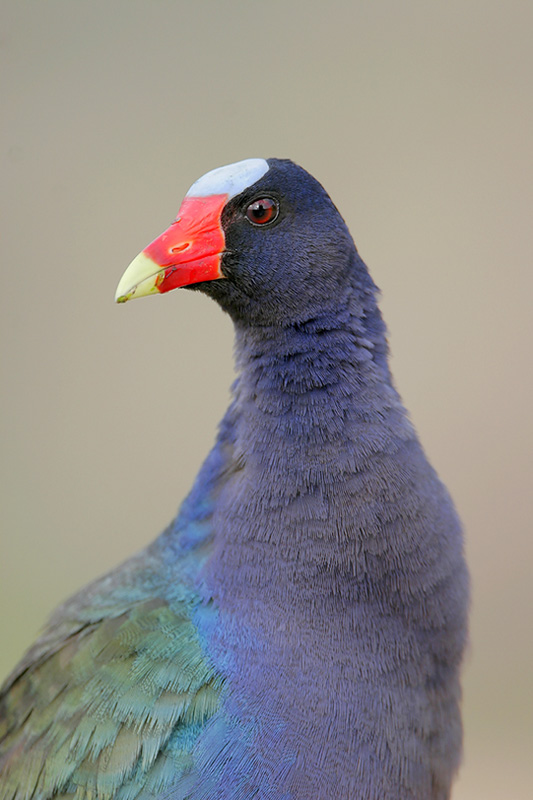Purple Gallinule (Porphyrula martinica)
Family: Rallidae
By Grace Yaros, Houston Audubon Coastal Conservation Technician
These multicolored, curious-looking birds are relatives of rails, and like many other rails are fond of wetland habitats with plenty of places to hide from potential predators. Adult Purple Gallinules have dark purple-blue heads and underparts, with a contrasting bright white under-tail. Their backs and wings are an iridescent turquoise green. Their bills are bright red with a yellow tip, and they have a light blue frontal shield just above their bill. They have bright yellow legs and exceptionally long toes that allow them to walk across floating vegetation by distributing their weight more evenly across the vegetation and preventing them from sinking. They are also accomplished swimmers and divers! Purple Gallinule chicks are black when they first hatch, then become golden-brown with some blue in the wings. Adults may be confused with Common Gallinules, but Common Gallinules are black and brown, without the bright purple and blue tones of Purple Gallinules. Common Gallinules also have a thin white stripe down their sides, which Purple Gallinules lack.
Purple Gallinules are found in freshwater habitats with sufficient vegetation to provide space for them to nest and forage, such as marshes and along the edges of ponds and lakes. Many freshwater ponds that these birds traditionally would have fed and nested in have been destroyed and replaced by agricultural fields, but they have adapted well to the use of rice fields. The majority of their diet consists of seeds, flowers, and fruits of aquatic plants, but they also commonly eat insects, fish, frogs, and eggs and nestlings of other birds.
They are year-round residents in Florida and the West Indies, and from Mexico through central South America. They are locally common during the breeding season along the Gulf Coast, and migrate south for the winter. Purple Gallinules are prone to wandering outside of their expected range, however, and individuals have been found as far as Europe and South Africa! In 1962, a pair of Purple Gallinules and their nest were discovered in Ohio– the northernmost known nesting record for this species! In the Houston area, these spectacular birds can be seen at Brazos Bend State Park, Sheldon Lake State Park, Anahuac National Wildlife Refuge, and at Houston Audubon’s Smith Oaks Bird Sanctuary.



Visit our Bird Gallery to read about other Texas birds!

